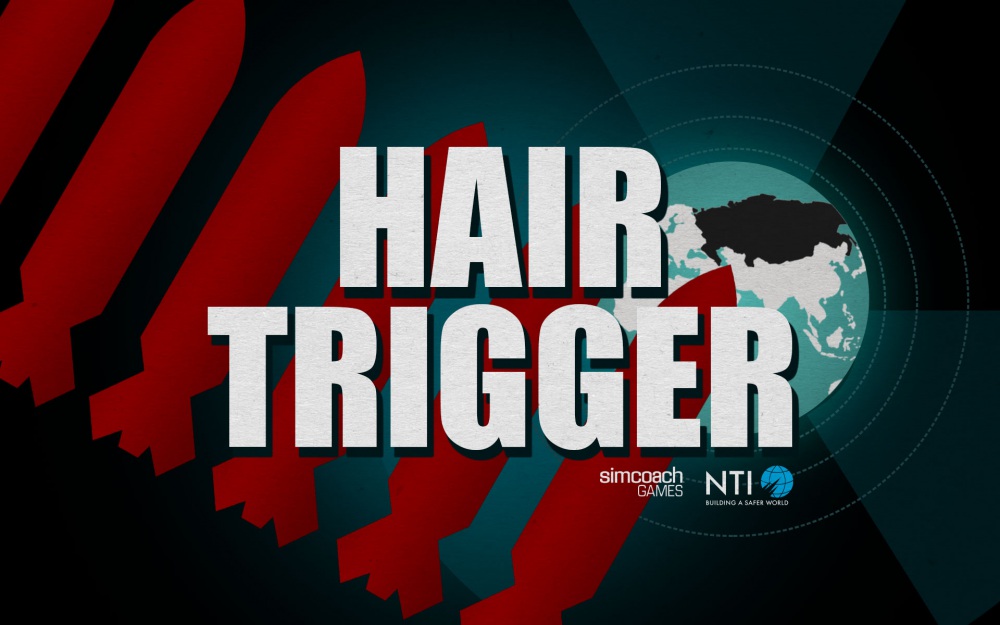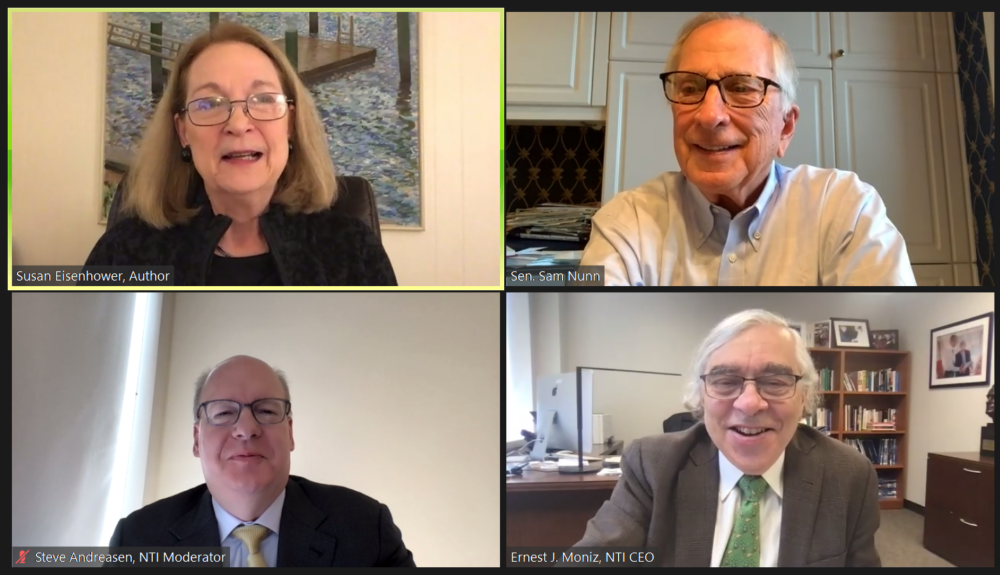This review was written by Benjamin Reichard, a graduate Public Policy student at the University of Maryland, College Park. He learned about Hair Trigger in a class on international security policy. He enjoys other games that also deal with nuclear risk, such as the Fallout and Civilization series.
Hair Trigger, a new mobile game released by the Nuclear Threat Initiative (NTI), is an interactive lesson on the fragile balance of nuclear power. Available for free as an app on Google Play and through the Apple Store, the game pairs straightforward gameplay with nuclear near-misses from history. Easy to access and digest, it is a learning tool that may reverberate with a younger generation that prefers bite-sized chunks of learning over a textbook or lecture.
The premise is simple: as president of the United States, you are tasked with reducing the number of nuclear weapons on “hair-trigger” alert, meaning they can be launched in an instant. To do so, you need to build political capital, sway public opinion, and negotiate with Russia. This is all done through a basic resource-allocation menu and turn-based gameplay. Between turns, random events occur that affect political capital, public opinion, and the risk of incident. These events pull from a collection of alarming stories about real-world near disasters. They taught me several interesting historical snippets and made the precarious nature of nuclear stockpiles feel more real.
After a brief tutorial, I settled right in. Each game took about 10 minutes to complete, and most of the time I was able to achieve total elimination of hair-trigger weapons. Major lessons I learned: Russia was more willing to negotiate on its weapon stockpile than I had thought; the process of eliminating weapons could take over a decade; and despite best efforts, some things are still beyond our leaders’ control. In a game I lost, India attacked Pakistan after several random events increased the risk of incident. This highlighted that the dangers are global and not just between the former Cold War adversaries.
The gameplay suffers slightly from the simplified in-game economy; since political capital is used to get more political capital, I was able to “go infinite” and max out my capital after just a few turns. This let me bolster public support and reduce weapons with little difficulty. In reality, a president cannot endlessly invest in the economy and sign popular legislation to obtain favor. A little more variety in gameplay would also have been welcomed, perhaps by having a separate minigame for negotiations, but overall the system worked well enough for a small app.
At the conclusion, the game gives players a link to learn more about nuclear risks and how they can get involved. I thought this was a great inclusion and an important connection between learning and doing; players who become motivated by the game could spring into action immediately.
Learning during the COVID-19 pandemic is difficult enough, and really connecting with the terrible possibilities of nuclear warfare over a video call is nearly impossible. Lessons of this importance should not be lost in sleepy textbooks with technocratic jargon. Playing Hair Trigger is one way to make that learning a little more real – and a little more fun.




